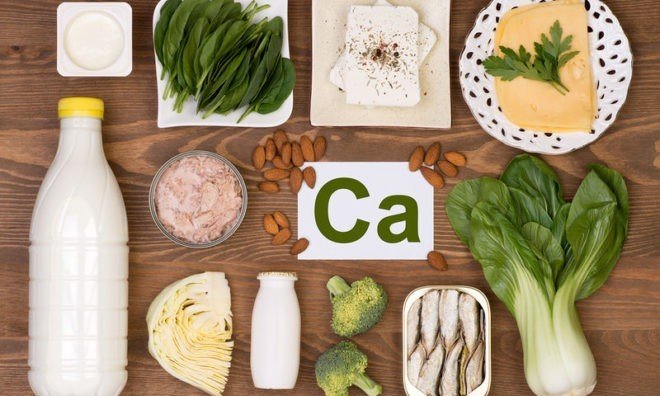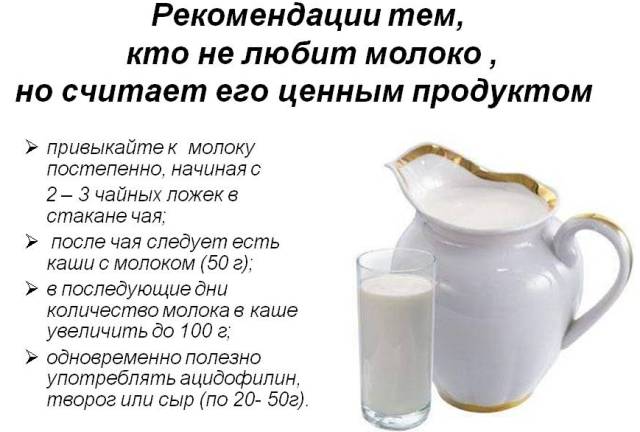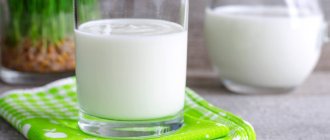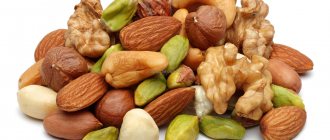Breastfeeding is a unique opportunity to raise your child healthy and happy. Breastfeeding is provided by nature itself, and it would be wrong to refuse such a wonderful gift. However, it doesn't always go the way you want. And you can often find that the baby doesn’t have enough milk.
When answering the question of how to increase lactation while breastfeeding, Komarovsky authoritatively states: it is necessary to put the baby to the breast as often as possible and allow him to eat for as long as he wishes. Undoubtedly, this is the main condition for increasing milk production. In response to stimulation, its volume will increase very soon.
Is there a problem?
What does a lack of breast milk mean?
- underweight in the baby;
- anxiety during feeding;
- a small number of wet diapers;
- dark urine.
The following signs do not always mean low milk supply:
- Mom can't express milk. Some nursing mothers produce milk immediately when the baby sucks at the breast. During breaks, it practically does not accumulate, so there is nothing to express.
- There is no feeling of breast fullness. For the above reason, as well as with established lactation, the mammary glands function stably. The flow of milk becomes uniform, and breast overflow no longer occurs.
- The milk stopped leaking between feedings. This also indicates mature lactation and should not be a cause for concern.
But sometimes the problem is still real, and a nursing mother has a question - how to increase the amount of breast milk. There are many ways to cope with the disadvantage. Many of them are really effective.
What to drink while breastfeeding?
What fluids does a nursing mother need? We have collected the most relevant nutraceuticals, according to doctors, for the health of mothers and babies during breastfeeding. Breastfeeding is a time when a woman’s body needs special support. Under no circumstances should you go on a strict diet, for example, only kefir and cabbage, which is needed only if you have congenital allergies and other medical indications.
There is no need to deny yourself the consumption of permitted fruits, berries and vegetables. Emerging rashes in a child may indicate an immature digestive system, and not an allergy. If you want to find out the food component that led to a rash or abdominal pain in your baby, keep your food diary.
This way, you will find several foods that your child may have an increased reaction to early in life and eliminate them from your diet. There are some restrictions on strong drinks. For example, it is better to avoid coffee, strong black and green tea in the first time after the birth of the baby, as they contain caffeine, which can pass through breast milk to the newborn and cause him overstimulation.
Coffee and cocoa are also strong allergens. When lactation is established and the baby reaches the age of a month, you can drink a small cup of coffee in the morning, or even better, replace it with a chicory drink, which has a good sedative effect and can even reduce the symptoms of intestinal infant colic. Weak black and green teas are also best consumed in the first half of the day. Whole milk, or rather milk protein, is also a strong allergen. At the beginning of breastfeeding, a nursing mother is allowed to drink no more than one glass of milk per day.
This restriction does not apply to fermented milk products, since milk protein is partially broken down in them. Women during lactation should avoid sweet carbonated drinks, as they can also cause gas in the baby.
It is also believed that during this period it is better to quench your thirst with regular drinking water. In the afternoon, you can drink various herbal teas, such as chamomile. By adding lemon balm and fennel to such herbal drinks, you can reduce the likelihood of colic in your baby. When drinking herbal teas, it is necessary to monitor the manifestations of allergies in the baby.
Many experts are confident that a newborn will receive vitamins through breast milk in any case: it does not matter whether the mother takes vitamin-mineral complexes or not. It will take the necessary substances from the mother’s body, especially from storage areas such as teeth, hair, and nails. This is why doctors advise breastfeeding women to take an IUD, this is especially important in the autumn-spring periods: March and October. Let's look at the most important vitamins, minerals and nutraceutical supplements, the intake of which is extremely necessary during lactation, according to experts.
But they are no less important for the mother, as they help the vessels remain elastic, prevent cholesterol from accumulating in them, and prevent swelling and excess weight gain. Doctor’s opinion, breastfeeding consultant Maria Shchekina.
And, if the use of Omega-3 thins the blood, then Omega-6, on the contrary, makes the blood thicker, slows down metabolism, and in case of overdose can provoke the development of inflammation.
How to compensate for Omega deficiency with food? Omegas are found in unrefined oils, raw nuts and seeds, grains, lentils, chickpeas, eggs and organ meats. Lecithin is one of the main building materials of the cell membranes of the body, it is especially important for the brain of mother and child. A third of the human brain and the nervous tissue of other parts of the nervous system are made from lecithin. The lecithin component, phosphatidylcholine, as a result of a biochemical reaction with vitamin B5 is transformed into acetylcholine, which is a neurotransmitter responsible for brain function.
Therefore, taking lecithin during lactation is the key to good mental activity of the child and mother, as well as their good health. It is important for pregnant and lactating women to take sunflower lecithin, as it is highly purified and hypoallergenic.
A lack of iodine in a child can cause inhibition of intellectual and psychomotor development, as well as slight weight gain. For a mother, a lack of iodine can affect the functioning of nerve cells and the thyroid gland, which is responsible for her metabolism and psycho-emotional state. The recommended iodine intake for a nursing mother is mcg per day.
Let us remember that iodine can also be obtained by using iodized salt in cooking: 1 gram of salt contains 45 mcg of iodine, however, when heated, iodine is volatile and easily evaporates, so this iodine replenishment is only relevant when adding iodized salt to the finished dish.
The only contraindication to the administration of iodine is thyrotoxicosis. Therefore, before starting to take iodine, it is important to consult with an endocrinologist and take the necessary tests for thyroid hormones. The daily calcium requirement for a nursing mother is mg.
There is an opinion about the high calcium content in dairy products, however, it is worth remembering that with age, the body's digestion of milk decreases. Unfortunately, many of these products are allergenic, and parsley, for example, generally causes a decrease in milk supply. A moderate amount of walnuts - up to 5 nuts per day - will help improve lactation and make breast milk more nutritious for the baby.
And again, we monitor the manifestations of allergies. Vitamin D plays a major role in calcium homeostasis in the body. With a lack of vitamin D, calcium accumulates in the blood, and the body has to utilize it through the kidneys.
As a result, calcium will be deposited in them in the form of sand, which will eventually turn into stones. Also, if calcium is not absorbed, it is deposited in the blood vessels, which makes the cholesterol plaque hard. The result is a heart attack or stroke.
How can you find out if you have enough vitamin D for proper calcium distribution? In complex vitamins calcium with vitamin D, as a rule, the dosage of vitamin D is only IU, which is certainly not enough for good absorption of calcium. It is also important to take vitamin D in the morning, and consult with your doctor which form of vitamin D, water or oil, is right for you. Magnesium is an intracellular element that takes part in the development of the baby’s nervous and muscular system.
Daily requirement of magnesium during lactation mg doctor, breastfeeding consultant Shchekina Maria. Taking vitamin B6 improves the absorption of magnesium. You can also replenish magnesium by consuming the following foods:. It is important to remember that taking vitamin-mineral complexes for pregnant and lactating women must be agreed with a doctor, since their uncontrolled use can lead to allergies or hypervitaminosis. For example, in newborns, vitamin A hypervitaminosis can lead to itching and ulcers on the skin and poor weight gain.
Taking vitamin D in excess doses is also dangerous, as it can cause intoxication in the child’s body. Typically, with such intoxication, an increase in pressure and a rise in temperature are observed, as well as bulging of the fontanelle and a decrease in the amount of urine in the newborn.
If there is an excess of calcium in children, there is a danger of premature closure of the fontanel. This, in turn, can lead to abnormal brain development in the newborn. The older the child, the wider the mother’s diet, and the greater the need for additional food supplements. During breastfeeding, avoid self-prescribing, even if a friend has recommended additional sources of vitamins, minerals and other nutraceuticals.
Trust a qualified doctor who will select the necessary complexes based on the individual characteristics of your body and for the benefit of the baby’s health. Feed with pleasure and be healthy! Pregnancy test Pregnancy calendar Student daughter reports pregnancy.
How should parents react? Recovery after childbirth - where to start? I was diagnosed with infertility. And I took it and gave birth to four.
Conditions for full lactation
When answering the question of how to increase breast milk lactation, you can give a lot of ways. One will suit some people, others will suit others. First of all, you need to calm down. Every mother experiences lactation crises at certain periods of her child’s life. They last 2-4 days, then the volumes are restored. Also, a lack of milk occurs when the baby’s nutritional needs increase sharply.
The main thing: increasing lactation is impossible without active stimulation of the mammary gland by the baby. In response to sucking, hormones are released, and the body understands that more milk is needed. A nursing mother should offer her breast to her baby as often as possible and spend more time doing this activity.
It is impossible to take the breast from the child by force. In a situation of lack of milk, prolonged sucking will not only stimulate the mammary gland, but will also have time to receive the required portion of nutrition.

In many cases, this approach alone is sufficient when a woman is thinking about how to increase lactation. Children's doctor Komarovsky also speaks about this. But other methods are also used to increase the quantity and improve the quality of breast milk. Here are some of them:
- Drink as much fluid as possible. Weak sweet tea, compotes, and weak fruit drinks are suitable. It is not advisable to drink carbonated drinks. A hydrated body will find it easier to produce more milk. It is better to drink before feeding.
- It is important to eat well. The composition of milk depends on proper nutrition. However, you shouldn't indulge in buns with sweet tea. This is unlikely to affect the amount of milk, and will most likely lead to excess weight. Also, don’t get carried away with the so popular condensed milk. Babies with such a mother's diet have severe colic.
- Try to avoid stress. Against the background of frequent nervousness, lactation may stop altogether. It is advisable to arrange a pleasant rest for yourself more often and involve your family in caring for the baby.
- It is important to put your baby to the breast correctly. Not only the intensity of lactation depends on this, but also how quickly the baby gets enough. Also, when applied correctly, the breasts are emptied evenly.
- After each feeding you need to express the remaining milk. They can be used to feed the baby. There are a large number of detailed videos about pumping techniques.
- It is advisable to massage your breasts regularly. It will not only have a positive effect on the skin of the breast, but will also improve blood supply to the mammary gland. As a result, more milk will also arrive.
- If you apply a warm towel or take a relaxing shower to the glands before feeding, the milk ducts will dilate and allow more fluid to pass through.
- Try to get enough sleep. Many young mothers suffer from overwork.
- It is extremely important to feed your baby at night. The longer the better. Applications are especially effective around 5 o'clock in the morning. At this time, the hormone prolactin, responsible for the secretion of breast milk, is produced to its maximum.
Products with calcium during breastfeeding (lactation): list

The Ca element plays a leading role in the physical development of the baby and is responsible for the formation of the skeleton, muscle tone, and neural connections. Calcium restores a woman’s body after childbirth, restores beauty to hair, strength to nails and teeth. In the first 6 months, the mother loses 7% of bone tissue, this affects her well-being and appearance. Teeth often crumble, nails peel, and hair falls out. The changes are associated with hormonal changes and will subside in six months. Calcium is then restored on its own by consuming nutritious foods.
It is not recommended to take calcium supplements without consulting your doctor. A woman often gets scared in the first time after giving birth and prescribes the drug herself. But after six months, the concentration of the substance in the blood increases naturally and taking supplements provokes hypercalcemia. The disease primarily threatens complex pathologies of the cardiovascular system.
When adjusting the menu, the tendency to allergic reactions in infants is taken into account. For example, it is better for a nursing mother to avoid drinking milk as a source of calcium for up to six months.
Recommended diet
- Low-fat cottage cheese, natural yogurt without additives.
- Hard varieties of cheese.
- Sesame - as an additive to dishes (5 tablespoons = daily requirement for Ca).
- Figs, prunes, dried apricots.
- Green vegetables and herbs - broccoli, cauliflower, lettuce, dill.
- Fruits - kiwi, green apples, bananas, pears (100 grams - 1% daily share).
- Bread (yeast-free, whole grain flour).
- Nuts from the third month - cashews, pine, walnuts.
For up to six months, pediatricians recommend excluding legumes, bread made from wheat and corn flour, and almonds from the diet. Despite the high proportion of calcium in the composition, the products are extremely allergenic and unsafe for the baby.
In general, it is considered safe to take up to 2,500 mg of calcium per day, although this is more than necessary. If you're supplementing with more than 500 mg of calcium per day, split the dose so that you don't take it all at once—calcium absorption is best when a person consumes no more than 500 mg at a time. Excessive calcium intake can cause numerous side effects.
TOP 7 products by calcium content

The concentration of Ca in the blood of a healthy body is regulated by biological processes; drug support is required only in case of serious deficiencies. During breastfeeding, calcium consumption doubles, but adjusting the menu quickly makes up for the costs: 80% of the mineral enters the body with dairy products. For example, the concentration of Ca in a glass of yogurt is 230 mg, i.e. 1/6 of the daily requirement.
Table 1 - List of foods high in calcium
| Product: | Ca content, mg/100 g: |
| Hard cheeses | 550-1200 |
| Brynza | 560 |
| Sesame | 1150 |
| Almond | 254 |
| Sardines | 350 |
| Sprats | 300 |
| Rye bread | 323 |
For proper absorption of calcium, it is necessary to exclude animal fats and products containing oxalic and phytic acids (oatmeal, semolina, tea, coffee, soda). Otherwise, the mineral will not enter the blood serum and will be washed out of the body unchanged.
Parsley is rich in calcium, as well as cabbage and basil. Beans and dried apricots, in addition to their high mineral content, are also very useful during lactation.
The products purify milk from heavy metal salts and remove harmful substances from the body.
Selection of medications
In search of an answer to how to increase milk supply, some mothers go to the pharmacy. Many people are afraid to take medications. In fact, most products intended for nursing mothers are completely safe for the baby.
- Mlekoin. Homeopathic granules, the intake of which leads to a marked increase in milk supply. The effect of their use reaches 40% increase in lactation. It is produced on the basis of meadow lumbago and nettle.
- Apilak. Contains honey and royal jelly. Also refers to effective means.
- Lactavit. A lesser known drug that increases lactation. Less effective.
- Lactogone. It has a rich composition and has a good effect, but the treatment is not cheap.
- Vitamin PP. Taking nicotinic acid has good effectiveness. Many women stop taking it after the first dose, citing allergies: facial redness, dizziness. This is not an allergic reaction, but the action of the substance itself, the main property of which is vasodilation. There is no need to be afraid of this, the side effects go away quickly.

Taking medications is often justified and causes a good increase in milk. It is only necessary to monitor the reaction to the drug in both mother and child for allergies.
Reviews
At one month old, my baby was told that he had a soft skull and needed calcium. And they asked if my legs were bothering me? I was surprised to say no. We were prescribed Calcemin Advance. I drank, but I didn’t intend to drink. 2 days after visiting the doctor, I had leg cramps at night. And I remembered the doctor’s question about my legs. Started drinking. After a month, the baby's skull was fine and my legs no longer bothered me. I recommend to all.
Evgenka
barsic66687
During pregnancy, I supported my body with cottage cheese, these supplies lasted a long time, my teeth never deteriorated, and my joints did not hurt. Then, due to breastfeeding, there was clearly a lack of calcium in the body, and I stopped eating cottage cheese and apparently overate it. Then I remembered about the Calcium glucanate tablets I had known for a long time. I took it for 2 weeks three times a day, my teeth stopped hurting and I began to feel better. Over the course of a year, I’ve felt that my tooth is starting to ache a little, I immediately take calcium and it helps. I also gave calcium gluconate tablets to the child; some pediatricians recommend giving one tablet 2 times a year for 2 weeks in a row. It is believed that Vitamin D, which is so necessary for a child’s growth, is absorbed well with calcium.
Faygul
Helena.U
I started taking Pregnavit around the 4th month of pregnancy. Before this, I had been taking Pregnakea vitamins since I was three months old, but they clearly didn’t suit me. I was very afraid that during pregnancy I would have problems with my teeth, nails or hair. But with the help of pregnavite, I think I managed: my teeth remained in place, my nails became even stronger than before pregnancy, my hair became a little dull and split, but at least it didn’t fall out like with others. And hemoglobin was not below 112 even at the very end of pregnancy. But I felt that the drug was helping when in the first month after a difficult birth I felt terrible weakness, I just wanted to sleep all the time. The gynecologist advised me to start taking Pregnavit again. Literally after 7 days of taking it, I felt much more energetic and began to gain strength. Now I take it every month during the entire period of breastfeeding.
Volnistaia
During breastfeeding, a woman’s body gives its resources to the baby. To avoid health problems after the end of lactation, it is necessary to take timely care to replenish minerals, especially calcium. Along with good nutrition, pharmaceuticals and dietary supplements are good helpers. Despite the wide choice of drugs, you should not rush and prescribe therapy yourself. Do not forget to coordinate the use with a specialist.
During pregnancy and lactation, a woman needs to more carefully monitor her diet, because... The growing fetus requires a lot of nutrients.
Menu for a nursing mother
To enhance lactation, you need to consume foods that increase milk production:
- Squirrels. A nursing mother's menu must include a sufficient amount of protein products. During lactation, the body actively consumes proteins during the secretion of breast milk. The baby's growing body needs proteins, so the mother must watch her diet. Be sure to include meat, chicken, fish, cheese, cottage cheese.
- Cereals. Cereal porridges will saturate the mother’s body with complex carbohydrates and provide energy. Cereals also contain many vitamins necessary for full lactation. To prepare nutritious dishes, take grains such as buckwheat, oatmeal, rice and others.
- Vegetables and fruits. A nursing woman's needs for vitamins and minerals are especially high. Both during pregnancy and breastfeeding, the baby is completely dependent on the mother. It is necessary to include fresh vegetables and fruits in the mother’s diet several times a day. They will provide the body with vitamins and minerals, fiber will help other beneficial substances be easily absorbed and improve intestinal function.
- Nuts and honey. Two highly nutritious foods. The content of useful substances in them is maximum. However, consumption is associated with a high risk of allergic reactions in both mother and child. Honey and nuts should be introduced gradually, not exceeding reasonable quantities.
- Dairy products. Consumption of dairy products is necessary when breastfeeding. However, whole milk should be avoided as it can cause colic and bloating in the baby. If necessary, introducing milk into the mother's diet must be done with caution. Fermented milk drinks such as kefir, fermented baked milk, and yogurt are ideal for nursing mothers.

Goat milk: benefits and harms
Goat's milk: benefits and harm for a child. Goat's milk surpasses cow's milk in the amount of useful acids - it contains 1.5-3 times more linoleic and linolenic acid and therefore helps reduce cholesterol levels. It is low-allergenic and has bactericidal properties. Due to the fact that goats' diet includes woody parts of plants, milk contains silicon, which protects both goats and people from tuberculosis.
The fermented milk product yogurt, which is very popular in our time, appeared thanks to goat milk. Lactobacilli, which are the basis of yoghurt products, were isolated from goat milk. The current world level of goat milk consumption is increasing all the time; goat milk is considered safer than cow milk. Although goat milk may contain pesticides and heavy metals if animals are grazed near roadways and in industrial areas
For adults
The unique effect of goat milk on the body of adults is recognized by doctors all over the world. It is used for both treatment and prevention of many diseases. Milk cures bronchitis, thyroid diseases, tuberculosis, diabetes, allergies, and colds. Manganese, which is part of milk, helps to activate metabolic processes at the cellular level; with the help of magnesium, protein synthesis is accelerated, cellular growth and energy metabolism are normalized.

Elderly
Thanks to the consumption of goat's milk, stomach diseases and hypertension are cured, the functioning of the liver and heart is normalized, and the musculoskeletal system is strengthened. The nervous system returns to normal, insomnia and heartburn disappear, and the acidity of gastric juice decreases. The presence of the complex protein casein and vitamin D in goat milk helps prevent deterioration of the brain function of older people and restore the normal strength of nails, teeth, hair and joints. Milk is used to improve the condition of patients after chemotherapy.
Is goat milk good for children?

Doctors do not recommend giving children under one year of age either goat's or cow's milk. The high content of phosphates and calcium in goat milk does not contribute to the normal functioning of the not yet fully formed kidneys of infants. If there is no way out and it is impossible to buy dry milk formulas, only in this case do you use goat milk, diluted to a fat content of no more than 2%.
For children of any age, choose milk from healthy goats, which are grazed in environmentally friendly places and kept in conditions that comply with sanitary standards. It should be remembered that goat's milk contains much more protein than mother's milk, and it can cause excessive gas, colic and bloating.
Natural help
Traditional medicine tips can also help improve lactation. Plants such as Maryin root, dill, nettle, fennel, anise, carrots, raspberry leaf increase milk production in a woman.
Infusions must be prepared before use. You can use just one thing, but it will be more effective to take a mixture of herbs. There are a great many recipes, finding them will not be a problem.
But where and when can a nursing mother find these medicinal herbs? Many manufacturers have taken care of this and have been producing ready-made teas for a long time. The collection of fennel, anise seeds and dill fruits has a good property of inducing a flow of milk. Most ready-made mixtures consist of these same components. For convenience and ease of preparation, soluble concentrates are also available.
Recommendations
It is better to take the drug during or immediately after meals. The drug should be washed down with a glass of milk or still water. For a more effective effect of the drug, it is advisable to review the diet, enriching it with fermented milk products (milk, cottage cheese, yogurt, cheeses). The greatest amount of calcium is found in:
- sesame seeds;
- nuts;
- beans and dried fruits.
If any complications or side effects occur, consult your doctor immediately.
The standard dose of Calcemin for a nursing woman is 1 tablet 2 times a day. But during the consultation, the doctor determines the required dose of the drug individually.
How to choose honey
To avoid any negative effects on the bee product, it is best to buy honey from trusted beekeepers. Only then will there be a greater chance that the honey will be of high quality. In stores, in order to give honey a marketable appearance, it is exposed to high temperatures, and when heated to 40 degrees and above, honey loses up to 90% of its beneficial qualities.
Transparent honey in a beautiful package in winter is not the best product for a nursing mother.
How to correctly identify a quality product?
There are several simple ways to determine quality honey:
- Honey should be clear and aromatic. If honey is odorless, this indicates its synthetic origin;
- If you dip a spoon into honey, a high-quality product will flow out in a uniform stream. If sugar was added to the honey, it will drip intermittently from the spoon;
- The honey treat itself should contain no more than 20% liquid. If the honey is not unseasoned, then when it gets on the napkin, a wet mark will remain. Breastfeeding mothers are not allowed to eat this honey;
- It is also easy to detect the presence of sugar in honey. A liter of quality honey weighs 1.4 kilograms. If the weight exceeds, this indicates that various additives were added to the honey.
These simple rules will help nursing mothers choose high-quality and healthy honey without worrying about the health of their baby.
Like any other new product included in a baby’s diet, honey can cause an allergic reaction. Therefore, before introducing a new but useful product, you must consult your pediatrician and strictly follow his recommendations.
Why is honey dangerous?
After giving birth, the mother must stop taking bee products. The baby needs some time to stabilize the digestive system. Honey is a concentrated product that can provoke an allergic reaction in a child. A honey product that has not been processed may contain bacteria that can cause a disease such as botulism.
To protect the child from this disease, doctors advise introducing bee products into the mother’s diet when the baby is six months old. By six months, the child’s body is already resistant to bacteria, and therefore it is allowed to gradually include bee products in the mother’s diet. If the child does not have a rash or redness on the skin, it is allowed to consume honey a teaspoon per day.
Honey, according to doctors, is in fourth place among foods that cause allergies after citrus fruits, chocolate and strawberries. When breastfeeding, honey can be eaten on an empty stomach, mixed with any drinks or put in tea as a sugar substitute. But we must not forget that at high temperatures the usefulness of honey decreases.
Immediately after the birth of a child, many women are overweight, which they gained during pregnancy. Such women should not consume a lot of honey while breastfeeding, as it contains sucrose, which contributes to excess weight gain.
Honey can be introduced into a child’s diet from the second year of life, little by little, starting with half a teaspoon per day, observing how the body reacts to the new product. If you do not notice changes for the worse, you can continue to give honey. When increasing the portion, be sure to monitor the general condition of the child’s body.
What can be done to increase lactation
But if you still want to continue feeding only naturally, then the most common problems with a lack of milk can be solved by persistent breastfeeding.
Place your baby on the breast as often as possible during the day, but also at night. also change your feeding position to stimulate all parts of the breast. After several days of intensive feeding, the breasts will adapt to the new needs for milk.
When there is little breast milk, you should relax, not think about problems and worries, but focus on what you want to achieve.
Unnecessary problems can also cause the loss of breast milk.
The baby will behave better when more milk begins to be produced.
- Create a cozy atmosphere that will encourage milk production and frequent breastfeeding.
- Find some quiet and cozy corner in your home and stay there with your child.
- Follow the child's mood and general condition.
- If you feel like you should give him a bottle, give him a bottle.
- Try to do everything calmly and listen to your instincts.










